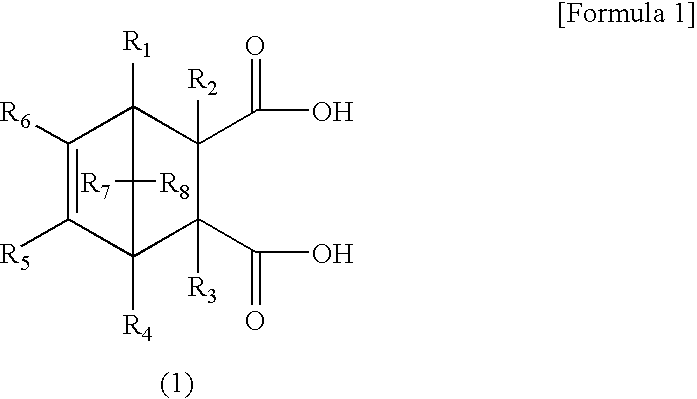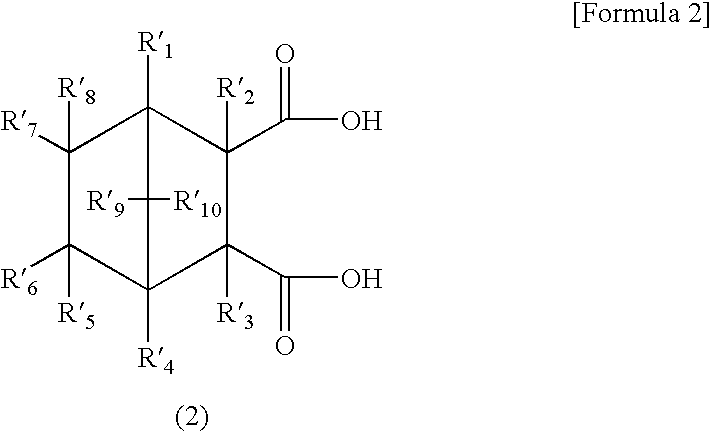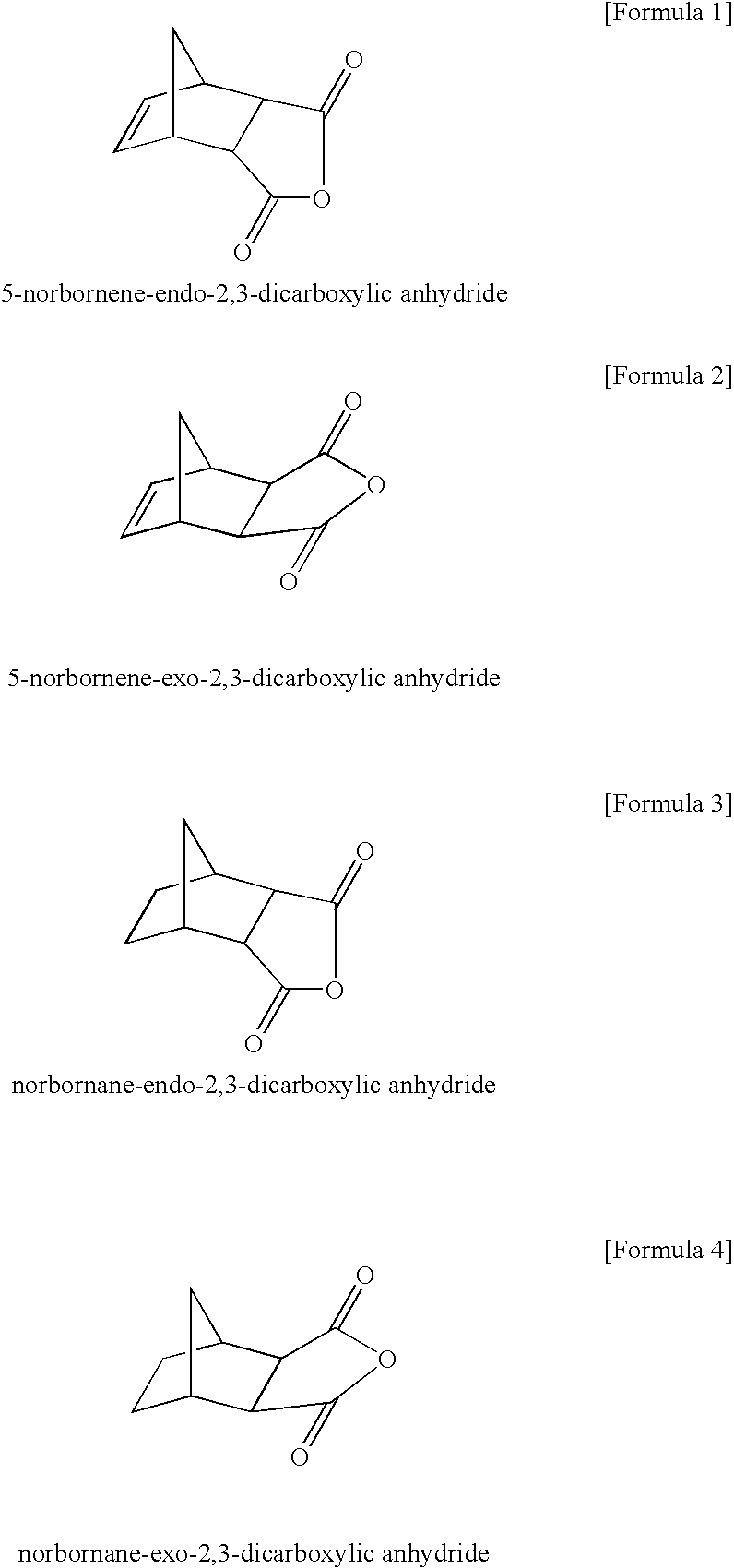Method of separating stereoisomers of dicarboxylic acid having norbornene or norbornane structure, or derivative thereof
a dicarboxylic acid and stereoisomer technology, applied in the field of separation of the endo isomer and the exo isomer of a dicarboxylic acid having a norbornene or norbornene structure, or a derivative thereof, can solve the problems of difficult extraction of less prevalent stereoisomers, inability to obtain pure exo isomers solely by thermal isomerization, and low yield of 5-norbornene-exo-2
- Summary
- Abstract
- Description
- Claims
- Application Information
AI Technical Summary
Benefits of technology
Problems solved by technology
Method used
Image
Examples
examples
[0125]As follows is a description of the present invention based on a series of examples, although the present invention is in no way limited by these examples.
[0126]Furthermore, in order to determine the ratio between the endo isomer of a dicarboxylic acid represented by the general formula (1) or (2) or a derivative thereof, and the exo isomer of a dicarboxylic acid represented by the general formula (1) or (2) or a derivative thereof, the mixture was subjected to measurement using high performance liquid chromatography.
[0127]The column used was a Wakosil-II 5C18AR column manufactured by Wako Pure Chemical Industries Ltd., the eluent was a solution comprising a distilled water / acetonitrile mixture with a volumetric ratio of 8 / 2 to which had been added 0.05 mol / L of trifluoroacetic acid, and the detector unit was an ultraviolet-visible spectroscopic detector 875-UV manufactured by Jasco Corporation.
[0128]Furthermore, the endo stereoisomeric ratio [%] for the general formula (1) typ...
example 1
[0131]To 10.0 g of 5-norbornene-2,3-dicarboxylic anhydride (exo stereoisomeric ratio for the general formula (1) type=26%) were added 33.6 g of water and 16.3 g of a 30 wt % aqueous solution of sodium hydroxide (1.0 equivalents relative to the 5-norbornene-2,3-dicarboxylic anhydride mixture, 1.4 equivalents relative to 5-norbornene-endo-2,3-dicarboxylic anhydride), and the mixture was stirred at 70° C. for 10 minutes. The solid was then separated by filtration and dried. The obtained solid was 1.17 g (exo stereoisomeric ratio for the general formula (1) type=88%).
example 2
[0132]To 10.0 g of 5-norbornene-2,3-dicarboxylic anhydride (exo stereoisomeric ratio for the general formula (1) type=75%) were added 11.1 g of water and 16.3 g of a 30 wt % aqueous solution of sodium hydroxide (1.0 equivalents relative to the 5-norbornene-2,3-dicarboxylic anhydride mixture, 4.0 equivalents relative to 5-norbornene-endo-2,3-dicarboxylic anhydride), and the mixture was stirred at 70° C. for 10 minutes. The solid was then separated by filtration and dried. The obtained solid was 10.33 g (exo stereoisomeric ratio for the general formula (1) type=84%).
PUM
| Property | Measurement | Unit |
|---|---|---|
| temperature | aaaaa | aaaaa |
| boiling point | aaaaa | aaaaa |
| boiling point | aaaaa | aaaaa |
Abstract
Description
Claims
Application Information
 Login to View More
Login to View More - R&D
- Intellectual Property
- Life Sciences
- Materials
- Tech Scout
- Unparalleled Data Quality
- Higher Quality Content
- 60% Fewer Hallucinations
Browse by: Latest US Patents, China's latest patents, Technical Efficacy Thesaurus, Application Domain, Technology Topic, Popular Technical Reports.
© 2025 PatSnap. All rights reserved.Legal|Privacy policy|Modern Slavery Act Transparency Statement|Sitemap|About US| Contact US: help@patsnap.com



